Red or black lice,
the most harmful parasite in aviaries and the scourge of poultry farms
Have red lice invaded your henhouse or aviary? Are they multiplying at breakneck speed and you don't know where to start? An invasion of red lice can become very complicated if you don't act quickly. In this dossier, you'll find a range of answers and products to help you combat this invasive insect.
|
I would like to |
|---|
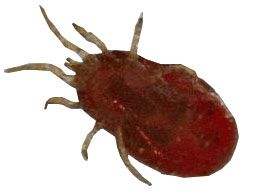
An ectoparasite is a parasite that lives on the body surface of a living being. There are several species of red lice, the most important of which is Dermanyssus Gallinae.
The red louse is an arthropod of the arachnid class, of the order Acariens, of the suborder Mesostigma and of the family Dermanyssidae.
It measures between 0.5 and 2 mm when fully grown. They range in colour from grey to bright red, turning dark red to almost black when digestion is complete. The red louse larva is transparent white.
As with bedbugs, they are very difficult to get rid of.
An external avian ectoparasitic mite, temporary and nocturnal, it remains hidden during the day in crevices or cracks near its hosts and attacks at night by sucking their blood (for 1 to 2 hours).
Normally it survives only temporarily on humans and mammals, but people in regular contact with infested animals can develop irritations and allergies following bites.
How do red lice find their host to feed on ?
Red lice locate their hosts using a highly specialised recognition system, called chemoreceptors, located on the antennae. These chemoreceptors are sensitive to various parameters :
- Olfaction
- Perception of heat
- Infrared radiation
- Day/night vision
- Chemo-olfactance (perception of specific molecules and odours)
- Vibration
Specific data (osmolarity, salinity, chemical composition) confirm to "suckers" like red lice that they are indeed sucking blood and can therefore feed. The precision of sensory perception is linked to the number of chemoreceptors. The red louse that lives close to its host has few antennular receptors (fewer than 50, compared with a mosquito or fly, which can have up to 5,000). These are also used for sexual purposes.
Watch out for red lice !
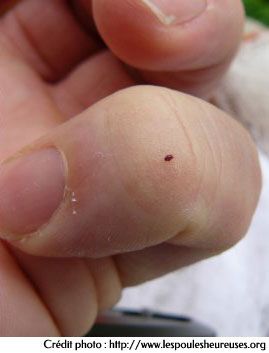
The red louse is a small vampire that makes its home in both hen houses and pigeon houses.
They attack sleeping animals at night, suck their blood and then retreat again.
All breeders agree: the red louse is now the most harmful external parasite in aviaries, pigeon houses and hen houses.
Whether you're a hobbyist, a small breeder or a professional, whether you keep ornamental birds (canaries, pigeons, serins, parakeets, etc.), laying hens, pheasants or quails, there are few who have not been infected at least once by this parasite.
This is not just a French phenomenon, but a worldwide one, with an estimated 70-80% of professional layer hen farms affected to varying degrees of severity. The consequences can range from a drop in egg-laying to the death of the hens from exhaustion.
Lice are generally introduced into the henhouse, cage or aviary by an outsider, but they can also be introduced by the breeder or a mammal such as a rat or dog.
According to studies by ITAVI (Institut Technique de l'AVIculture), the strains attacking wild birds are different. It is therefore unlikely that this parasite will be brought back by a nearby nest.
Its presence is a danger :
Its repeated bites cause anaemia (reduction in the number of red blood cells), which can be fatal in young birds. As carriers of pathogenic bacteria, they can inoculate themselves with germs (salmonella) or parasites (plasmodium) and can sometimes attack humans.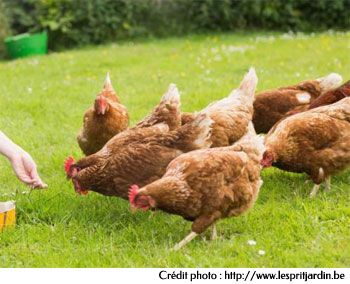 Its presence can lead to reduced egg-laying in hens (but also to discoloured yolks and stained eggs) and severe anaemia in squabs.
Its presence can lead to reduced egg-laying in hens (but also to discoloured yolks and stained eggs) and severe anaemia in squabs.
In favourable conditions of temperature and humidity, the complete cycle (egg to egg) of the red louse does not exceed one week. Clearly, destroying this parasite is no simple matter, especially as it is capable of going 8 months without feeding or surviving by taking the necessary proteins from droppings, feathers and dust!
Given the speed with which they reproduce (a female can lay 100 to 200 eggs a week), infestations can quickly become very large (exponential multiplication).
As with all insects that reproduce very quickly, there is a potential risk that any red lice that survive the treatment will develop resistance to the insecticide used.
Lice are a fearsome parasite, and to destroy them you'll need courage and patience.
Main areas infested by red lice

Red lice can hide in many places away from light, but the most common are :
- under droppings on duckboards,
- under nesting troughs and fixing hooks,
- in perch tubes,
- under nest perch bars.
Obviously, it is very difficult to destroy the colony completely. The aim of the treatment is to keep the red lice population at an acceptable level so that there is no impact on the quality and quantity of production.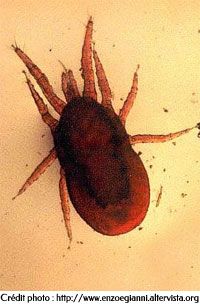
If your animals are dying or appear exhausted, if your broods are suffering from unusual mortality or if the eggs have small red spots, then it's possible that you too are running a red lice farm!
To be sure, and if you haven't had the chance to see them yet, there's a very easy and effective way of detecting their presence. As these insects seek out a dark corner close to their hosts, provide them with a hiding place: one or more pieces of white cloth balled up close to your pets. After a few days, unfold them and check for the presence or absence of parasites.
When should red lice be treated ?
Normally, red lice do not tolerate light. However, it has been found that when the infestation is very high (too many lice for the number of hosts), they can be present on their host at all times, with or without light (the lice take turns feeding).
To destroy as many red lice as possible, it is therefore advisable to treat when the building is completely dark, i.e. 2 hours after the light has disappeared or early in the morning before the light appears.
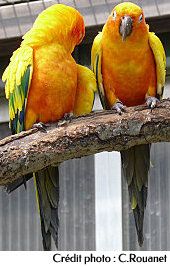
Red lice attack birds Whatever treatment product you use, its effectiveness will depend on the quality of its application and, above all, the cleanliness of the surface.
Dust, feathers, droppings, etc. are ideal hiding places for red lice. Surfaces must therefore be as clean as possible.
1 - Cleaning
- Empty the area completely, getting rid of any straw or litter (burn it if possible),
- Scrape, brush and carefully scrape horizontal and vertical surfaces using a high-pressure cleaner or water jet,
- Remove all dust,
- Wash with water and black soap,
- As far as possible, dismantle the breeding equipment and clean it.
2 - Treatment of buildings 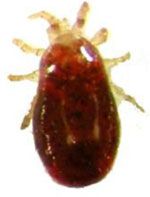
a. To treat large areas, we recommend using a garden sprayer and 4J insecticide concentrate. To give you an idea, a 250ml bottle diluted in 5 litres of water will treat around 50m² (also available in 125ml, 500ml or 1 litre).
Water all horizontal and vertical surfaces thoroughly, paying particular attention to nooks and crannies, cracks and crevices. This treatment, if carried out methodically, should eliminate a large proportion of the adults and eggs.
b. When everything is dry, you can then sprinkle all horizontal surfaces, nests and nooks and crannies with our diatomaceous earth.
You don't need to use large quantities of powder, but it is important to spread the product as evenly as possible to block the lice's access. In a cage or if you are using newspaper, it is advisable to put the powder under and on top of the newspaper. The idea is that the lice will pass through the surface treated with the powder before reaching their prey. For action in the tiniest nooks and crannies, small holes and hard-to-reach gaps, choose diatomaceous earth spray in aerosol form.
c. As the louse's cycle lasts a week, you may need to consider treating cages, cracks and all nooks and crannies 2 or 3 times, one week apart.
3 - Animal treatment
After treating the buildings, you'll need to treat your animals with our ALT'O ZINSECT insect repellent spray. A formula combining 3 recognised active ingredients (Eucalyptus citriodora, plant pyrethrum and geraniol), which are extremely effective at keeping biting insects at bay. This prevents the return of red lice on treated animals (repellent effect) and also eliminates those already present on the animals (prevents blood sampling). For example, for a hen: 6 to 8 ml (2 to 3 sprays): you'll need to lift the feathers a little during the treatment, as this is often where the red lice are found. This treatment is sufficient for around 10 days.
4 - Treating perches, cages, feeders, etc.
You can use our ALT'O ZINSECT gel insect repellent to treat all the little nooks and crannies, especially vertical surfaces where liquid products won't stick. This product has the same composition as ALT'O ZINSECT spray, but is formulated in gel form. It's easy to apply with a brush.
5 - Remaining vigilant
From time to time, remember to do the rag test and check for the presence or absence of head lice.
6 - Be preventive
Most liquid insecticides, whether natural or synthetic, degrade over time and quickly lose their effectiveness. On the other hand, diatomaceous earth-based products (also known as Kieselguhr or silicon dioxide) remain effective as long as they are not covered in a layer of dust and are dry.
Every time you clean your aviary or henhouse, you can systematically apply diatomaceous earth. This harmless operation (silicon dioxide is also used in animal feed) gives excellent results in protecting your animals from lice.
Customer opinions on our method of action and our products to combat red lice
Here is an email exchange with one of our customers :
Mme c.:
"I have 13 hens and they have red lice. I'd like to be able to treat them as well as the henhouse I'm not sure what to buy, could you advise me ?"
Our answer:
To treat the buildings : 4J insecticide concentrate, dilute with water before use,
To treat the hens : ALT'O ZINSECT insect repellent.
Mrs C. followed our advice and bought : ALT'O ZINSECT spray - ALT'O ZINSECT gel and 4J insecticide concentrate 250ml.
Here's her response after carrying out the appropriate treatments :
"Just to tell you that the effectiveness of the products you sold me is remarkable. I followed your instructions to the letter and just one treatment was enough. I'll be sure to tell everyone about it! Thank you so much. Mrs C."
Mail from another satisfied customer :
"I ordered some products from you against red henhouse lice. The treatment was very successful. Thank you."
Here's what the red louse looks like in motion
Frequently asked questions about red lice
Q: Do you know a professional who treats red lice problems in Paris with your products? Our 48 m2 flat is infested (pigeon's nest near the toilet, which is where the infestation started), and we're under attack. We live with a 9-month-old baby, who doesn't seem to have been bitten yet.
A: We don't have any addresses of professionals who use our products in the Paris region. I don't think these insects attack humans. Red lice are mainly a parasite of hens and birds, so they also affect pigeons. If you remove the pigeons, and especially the nest (the droppings), you'll get rid of the red lice.
Q: Could you tell me what product and what dosage I can use to destroy red lice in my henhouse ? And can I use the product you recommend directly on the poultry ?
A: For red lice, you can use 2 products: 4J insecticide diluted at 5%, but only on buildings (it's not approved for treating animals) and Alt'O Zinsect spray, which you can use on buildings as well as on poultry.
Q: I have a 1 year old rat at home who has contracted red lice from her litter box. I wanted to know if the products you offer are safe for such small animals ?
A: No problem. Only cold-blooded animals should be avoided.
Q: We have horses in the pasture; what products are effective against lice and ticks ? How can we effectively eradicate ticks from the meadow ? How can I protect my horses from lice and ticks ? Which products ? Dilution ? How do I use it ?
A: For ticks on horses, you'll need to use ALT'O ZINSECT Long-Lasting Insect Repellent for horses, ponies and other animals.
Q: I'm a pigeon fancier and I used to put carbaryl-based products in people's bath water, but this product is banned from sale in France. There are a multitude of products against parasites but they all have to be sprayed and when they exist, the pigeons reject the bath because the water is coloured or smelly. Do you have an effective product against pigeon parasites to put in the pigeon bath ?
A: orry, we don't have this type of product.
Q: I have a big problem with mites (red lice) on my canaries, I lose them regularly, but I have a pyrethrum diffuser, I've emptied the veranda and I've put in a fumigant, but the problem still exists. Do you have a product that I can use without fear for my birds ? I can't manage.
A: I'm not sure that pyrethrum diffusion is enough to kill these ectoparasites. You can treat your birds with our ALT'O ZINSECT spray. It's harmless and has been tested on red lice. You should also treat your cage or aviary with ALT'O ZINSECT gel.
Q: What should be done when people have been attacked by red hen lice ?
A: If you're talking about the bites that red lice can cause, then you need to use the same products as for bites from other insects. We have an effective body lotion based on eucalyptus citriodora.
Q: I was looking for an ORGANIC treatment for chicken lice on Google and came across your site. It's very interesting. Do you have any experience of this type of treatment ? I chose lavender, but how do you treat it in an open shelter ?
A: Lavender essential oil, that's right. It's often used to treat head lice, but on children! No essential oil is really an insecticide, but rather a repellent. However, we do have 100% natural insecticides that might be suitable for you.
Q: I share my living room with a tribe of eight canaries. I'd like you to tell me about an insecticide that is harmless to these birds, which are very sensitive to their environment. The danger comes particularly from mosquitoes that transmit smallpox to birds. I diffuse specific essential oils, but that's not always enough.
A: Our insecticides, which you'll find on our website, are completely harmless to birds, as they are to all living creatures apart from insects and cold-blooded animals. You can treat the room and/or the birds.
Q: I think my birds are infested with red lice. I've just cleaned and treated the cage. The room in which the cage is located has a carpeted floor (it's my office), and as a precaution I'd like to disinfect it, but I don't know what product to use ? an all-insect insecticide treatment (4J concentrate diluted at 5%).
A: Red lice are fairly resistant insects. I'm not sure about the effectiveness of aerosols on this insect. In natural form, we have the Ecodoo All Insects spray. You can try fumigants, but that's not at all natural and there's no guarantee of results. For carpets, insecticide 4j at 5% poses no problem.
Q: I'm contacting you for information about diatomaceous earth. I've been advised to use your earth against chicken lice, summer dermatitis for horses, mites on horses and hens and dog fleas. What product and quantity do you recommend ?
A: Diatomaceous earth is not a miracle product that solves all problems. It is often combined with another treatment to complement it. For red lice, don't hesitate to read our dossier on the subject. Based on feedback, it would appear that diatomaceous earth alone cannot completely solve all your problems! For chicken lice or insects on horses, we have ALT'O ZINSECT spray. We also have a wide range of products for cats, dogs,...
Q: I'm looking for a new product that is more effective and, above all, less toxic to health than the one I currently use to combat red henhouse lice. I found brown lice on the drinking trough (around the stopper) and white lice... So I started disinfecting with my usual product, saniterpern + pyrethrum powder in the nesting boxes. They're not all dead and I don't want another infestation like I've had in the past due to a lack of knowledge. My hens are in an old stable, quite a large area with lots of wood unfortunately... difficult to treat everything... Of course, they have a run of about 400 m² outside. What product would you recommend ?
A: All the answers are on this red lice page.
Q: My canaries have lice and I'm about to start breeding them. What's the best and most effective way of getting rid of them ?
A: You'll find all the answers on this red lice page.
Q: I've received my order for an all-insect spray, Margosa extract and ALT'O ZINSECT spray. These products were used to eliminate lice in my henhouse. I'm writing to ask if I can eat my hens' eggs after the treatment (which I did yesterday). I haven't read any contraindications on your site.
A: According to all the information we have, there's no problem with eating eggs treated with margosa, as this product is mainly used to treat crops.
As far as 4J insecticide is concerned, you should of course avoid "spraying" eggs with it. While the membrane of an egg is permeable to air, it is not permeable to water. With ALT'O ZINSECT there can be no contamination of eggs.
To treat a hen house, proceed as follows :
- Remove the eggs and hens, not out of danger to them but to carry out a :
- Thoroughly clean the area (droppings on the floor and perches). If you don't do this first, you'll have trouble getting rid of the red lice.
- Then spray with 4J insecticide.
Q: On the ALT'O ZINSECT product page, your application example relates to the treatment of a horse. How many sprays should I apply to my hens using ALT'O ZINSECT spray?
A: You're right, the proportions for treating a horse or a hen are necessarily different. Horses are like humans. Its perspiration destroys most products such as mosquito or sun protection, so it needs to be renewed more often. For a hen, if she doesn't get caught in the rain, a treatment every 2 or 3 weeks is more than enough.
The problem with hens compared with horses: for horses, you treat the skin. For hens, it's more difficult unless you lift the feathers a bit during the treatment: 2 or 3 sprays/hen is enough for 2 weeks.
Q: What particular danger is there in using ALT'O ZINSECT Spray ?
A: ALT'O ZINSECT does not contain any R-phrases (danger), so there is no danger in using it or overdosing.
Q: Hello, I'm a breeder of hens, pigeons and rabbits for poultry shows in Alsace. This is my problem. For a month now I've had fleas in my henhouse and on my dog, so I'm also thinking about the hens, pigeons and rabbits. I've read that pyrethrum works as well as at home. But which one to choose ? Can you advise me on which range to choose ? I'm not a customer yet, but will become one in the future.
A: All mammals have fleas, but the chicken or pigeon flea is called the red louse (The bird flea is called Dasypsyllus gallinulae. Ceratophyllus gallinae is the henhouse flea). Rabbits and dogs, on the other hand, have fleas.
The difference between fleas and red lice is that fleas live on the animal, whereas red lice only go on the animal at night and only to feed. Afterwards, it goes back into hiding. The treatment required is therefore not the same. And just because you have lice on your hens doesn't necessarily mean you'll have lice on your pigeons. The same goes for dogs and rabbits. They're not the same species and they don't particularly go on other mammals (except when they can't find anything to eat!!! ). As for the products to use, you'll find all the answers on our red lice page.
Q: I've been getting bitten by little bugs similar to red lice for a week now. It's probably due to the pigeon's nest that's currently on my balcony. I'd like to treat my whole flat with the "Insecticide 4J Concentrate" that you recommend. Can you tell me if I can also spray it on my mattress, clothes etc ?
A: 4J Insecticide is a contact insecticide that works very well against red lice. You can treat all surfaces with this product. It doesn't stain. Pyrethrum breaks down in a few hours. Depending on the concentration used, a greasy film of potassium soap may remain in the formula (which has an asphyxiating effect on larvae and eggs). This residue is in no way toxic and is perfectly washable (it's only soap). For clothes, the Ecodoo aerosol method is more effective. Take the clothes to be treated and put them in a large bin bag. Spray the inside of the bag with the aerosol and close the bag as tightly as possible. Wait 24 hours and reopen the bag. Depending on the type of textile, washing at 60°C or placing in the freezer can also give good results against the presence of this type of insect. And lastly, a word of advice: if you can, either treat the pigeons and their nest for red lice, or evacuate the nest and give the area a thorough cleaning.





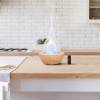






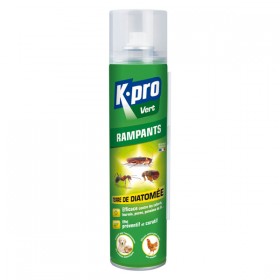
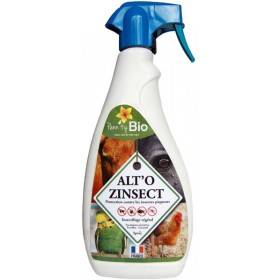
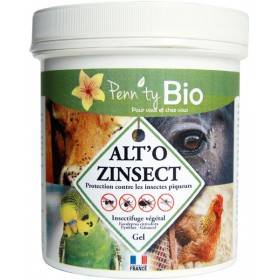
Customer reviews
Boutique très sérieuse avec un envoie rapide et des produits super efficaces.
XX
Cela fait plusieurs fois que je commande chez Penn'Ty Bio et je suis toujours satisfaite de la qualité des produits et de la rapidité d'expédition. Je recommande ce site !
Ghyslaine
super emballage écolo...bravo !
Isa
livraison impeccable, produit bien emballé et correspondant au descriptif, excepté pour la surface de diffusion, ma salle principale doit faire 25m2 maximum et ça ne se diffuse pas au-delà.
Pascale
Très bons produits je les recommande.<br /> Merci à Pennt'ty Bio pour tout, aussi bien pour les commandes et les emballages.<br /> Bravo Pennt'ty Bio.
Bernadette G.
Première commande chez Penn'Ty Bio : <br /> - navigation sur le site = 5/5<br /> - préparation du colis = 5/5<br /> - Prix compétitifs = 4/5<br /> - Qualité des produits sélectionnés = 5/5<br /> <br /> Vendeur à recommander.
Gaëlle
Service très professionnel et très rapide. A conseiller fortement.
Didier M.
J'apprécie les services de Penn'ty bio. Un maximum d'étoiles pour eux.
Ch. D.
La livraison est rapide, je n'ai jamais était déçue de ce site, et les produits sont pas chers et de très bonne qualité!
Patricia
Très satisfaite de ma commande chez Penn'ty bio. Site très détaillé, produit reçu rapidement, message manuscrit très sympathique. Je recommande !
XM
Livraison rapide et soignée. J'utilise les produits bio qui sont de très bonnes qualités. Un savon m'a été envoyée par erreur à la place de celui commandé et il m'a été remplacé très rapidement. Bravo pour leur réactivité. Je recommande fortement ce site.
Liliane
On ne peut pas toujours faire confiance à des sites de ventes sur le web, mais sur Penn'Tio, j' y viens les yeux fermés. Excellente communication avec le service clientèle, un suivi sérieux. Je remercie chaleureusement toute l' équipe.
Sergine T.
Très bien !
XX
Ma commande s'est déroulée sans aucun problème avec une livraison rapide et soignée. La satisfaction est au rendez-vs ! Continuez ainsi ! Merci et cordialement !
Etoile 07
Produits d'excellente qualité, arrivés rapidement, et conformes à leurs descriptions.
Michelle G.
Parfait.
Philippe
Dimanche soir, invasion de vrillettes du pain. Lundi matin, commande en urgence des produits verts adéquats. Mardi, livraison, traitement et fin de l'invasion.
Jean-Pierre
Très bien ! envoi rapide et conforme à ce qui est annoncé.
Jacqueline S.
Nous sommes très satisfaits du service client : mot personnalisé dans le colis, disponibilité du service après-vente... Nous souhaitons à votre société un succès croissant.
Sara
Les produits sont de bonne qualité. Leur prix est raisonnable. Ils sont livrés rapidement, et en bon état.
XX
Merci à tanteOdile pour m’avoir fait découvrir votre site. Depuis je suis une cliente assidue. Très satisfaite de la rapidité des envois, de la qualité de vos produits qui sont par ailleurs très bien détaillés par leur composition et leur mode d’emploi. Une amie vous a rejointe également avec la même satisfaction <br /> Continuez.
Marité D.
Excellentes prestations. Les produits sont formidables, l'emballage aussi. Les délais d'expédition compétitifs. Je recommande vivement Penn'Ty Bio à tous ceux que l'état de la Planète pour les générations futures inquiètent.
XX
Dommage, les vendeurs ne savent pas lire les indications inscrites sur les produits qu'ils vendent
XX
Produit performant et raisonnable au niveau prix. Je recommande
XX
livraison rapide, produits bien enveloppés avec juste un petit bémol : pour l'imperméabilisant dont le couvercle n'était pas bien fermé.
Alain
Merci pour votre démarche si respectueux de l’humain, des animaux et de l’environnement !
A.F
J'ai enfin reçu le petit colis, hier. Il a mis un mois pour me parvenir, mais vous n'y êtes absolument pour rien, comme je le pensais, il a été mis de côté lors de la grève nationale. Je vous remercie d'avoir fait faire des recherches, j'ai reçu un mot de la poste.
Hervé
Livraison efficace et bon contact oral avec mon interlocutrice.
Maussane
Bien reçu. Bravo pour votre extrême rapidité. Merci
Magali
J’ai découvert cette société en faisant une recherche sur Internet pour trouver un insecticide contre les sclérodermes. Je ne peux pas encore juger l’efficacité de chacun des produits par contre je suis très satisfait de la rapidité et de la qualité d’expédition, ainsi que du sérieux de la société. J’ai même reçu un petit échantillon est un mot personnalisé j’ai trouvé ça très sympa! Merci beaucoup et bonne continuation pour votre société que je recommande déjà.
BJ79
Livraison express. Colis toujours aussi bien préparé (cales, flocons, adhésif sur les bouchons qui risquent de couler). Bravo pour votre professionnalisme.
Isabelle
Jean Claude
Super, livraison rapide, suivi très rigoureux, site de confiance, très sérieux à recommander... Merci pour tout.
Bernard
BIEN,CONTINUEZ COMME çà.
XX
en comparaison d'autres produits employés précédemment, je trouve les vôtres beaucoup plus efficaces et cela sur le court terme ,disparitions des odeurs en combinant les produits suivant vos conseils .
XX
Claudine
Site sérieux. Bons produits.
Magali
colis dans les temps,emballage parfait,super accueil téléphonique pour renseignement, je recommande ce site.
ROSCO
Merci pour tout le soin que vous mettez pour une livraison individualisée, chaleureuse et aussi peu impactante que possible sur l'environnement !
Sandra
super contente, j'y trouve facilement les produits dont j'ai besoin et le service est impeccable et gentil !
Hélène S.
Tout était parfait. Produit, prix, délai.
Marco
Très bons produits efficaces.
XX
Livraison rapide et bien emballé. Petit message manuscrit qui fait plaisir :)
xx
Mon avis sur penntybio, très bon produit sur ce site pas une gamme monstrueuse mais que du très bon, et pareil pour les livraisons ultra rapides et le excellent sav si besoin. Je recommande vivement. Client depuis 2018 aucun soucis.<br /> <br />
thierry g.
Site clair, envoi rapide, marchandises bien emballées, et un petit mot charmant!
SM
Très bon site, très sérieux je recommande, produits de qualité et service après vente au top, de plus livraison des plus rapide et produits très bien emballés, tout est parfait
virginie
Maryse
Boutique sérieuse. Commande arrivée très rapidement. Merci pour votre gentil mot avec la facture.<br /> <br /> <br />
I Defoy
Très satisfait du site livraison rapide.<br />
Michel
Livraison très rapide. Bravo pour la réactivité
François
Merci beaucoup pour l'info, c'est rapide chez vous, très appréciable!
Denis
Je me permets de vous écrire un petit mot afin de vous dire que votre site est très bien fait.
Tom
Envoi rapide et soigné. Emballage ecoresponsable. Je suis ravi d’avoir trouvé des pièces de rechange pour les diffuseurs à huiles essentielles!
Ina L.
Un grand merci pour la qualité et la rapidité de votre réponse.
Tony
Produit anti puce extrêmement efficace !<br /> Le vendeur a pris une demi-heure de son temps pour m'expliquer absolument tout ce qu'il y avait à savoir sur le produit, de la composition a la mise en œuvre.. Bref au top ! Je recommande donc vivement Penn'ty !
Louis
Cliente depuis plusieurs années, j'apprécie toujours ce site. Meilleures salutations.
France
Je suis une amie de vos parents et suis toujours très satisfaite de tous vos produits. Ne changez rien et bonne continuation.
Marité D.
Excellents produits. Excellent service.
James T
livraison rapide, produit conforme.Prix séduisant.
XX
Pennty bio prends le temps de renseigner et donne de très bons conseils.<br /> Les produits sont emballés soigneusement et la préparation des commandes hyper réactive. Je recommande les yeux fermés !
Mattloumag
Pennty Bio? Einfach genial. Super rapide , bon produits, super service-livraisons. Je vais recommander bientot =)
xxx
Excellent service après vente après un problème d acheminement de colis par la Poste. Une relation client de très grande qualité. <br /> Cordialement,<br /> <br />
PV
Correspond à mes attentes
Henry
2 commandes à mon actif et jamais déçue. Vous avez gagné une cliente régulière :) Merci pour votre sérieux et le contenu bien rempli de votre site ! c'est super d'avoir une description hyper détaillée de chaque produit.
clara
Prix intéressants. Expédition super rapide à bon prix. Et tout ça de façon agréable !
Alexis M.
Les produits achetés sont excellents. Ils répondent parfaitement à ce que je cherchais. Bravo pour votre site
Michel
Merci. Je tenais à vous faire part de ma grande satisfaction. Je suis enchantée par les produits et par le service. Salutations et bonne continuation,
Odile
très bons produits et service commercial très performant, continuez sur cette voie, merci.
Annick
Très bon site. Envoi rapide. Prix moins cher que sur d autres sites. Bravo et bonne continuation.
Camille
Bonjour, je voulais vous féliciter pour la clarté de votre site, la rapidité de la livraison et la qualité de l'emballage.
catherine R.
Bonjour <br /> C'était ma première commande sur votre site et j'en suis très satisfaite <br /> Je vous remercie pour votre professionnalisme (site, prise de commande, livraison) ainsi que pour le petit mot qui rend le tout humain. Très belle journée.
CG
Au fil de mes commandes (j'en suis à la 5 ou 6ème) décidément, du sérieux et de l'écoute ! chaque fois que j'ai eu un petit problème: contact immédiat, réponse immédiate, et tir rectifié illico ! Dans le top 5 de mes sites internet !
Vincent
Très bon produit facile en entretenir, pas cher.
XX
Livraison rapide et avec colis préparé avec soin :)
Florian
Parfait. Rien à redire. Extrêmement efficace.
Quentin
Un diffuseur plus de 80 M², avec huile essentielles eucalyptus, vraiment formidable, on respire mieux et çà sent super bon. Le matin 1 heure, et le soir 2 heures. De jolies couleur, et pour les fêtes une jolie ambiance. Bravo.
PATRICK
Sav très réactif et efficace suite à avarie durant transport. La livraison du produit en remplacement du colis défectueux à été particulièrement rapide. Merci.
Valérie
Livraison rapide , produits de qualité, je recommande Penn'Ty Bio.
XX
Je suis ravi de trouver les produits de qualité et d ‘efficacité incomparable.
Denitza K.
Merci à Penn'ty bio d'avoir garder beaucoup de produits de la marque Lerutan et pour le sérieux dans la préparation et l'expédition des colis. Je recommande.
SR
très satisfaite de ma commande site vraiment sérieux livraison soignée et rapide ,les articles sont conformes a la description,je suis enchantée et recommande vivement
Marie Viviane C.
Bons produits. Fonctionnent très bien.
xx
Très satisfait de Penn'Ty Bio : choix étendu,prix raisonnables délais de livraison rapides.
xx
service très efficace à chaque fois que j'ai commandé. aucune mauvaise surprise sur la livraison. je recommande
Agnès
Site de grande qualité !
Rose Anne Marie
Commande passée le jeudi soir, colis livré chez mon "commerçant-relais" le samedi matin. Quelle rapidité ! Du vrai professionnalisme !
Emeline
Je ne connais pas encore tous les produits mais contente de ce que j'ai commandé. En revanche un peu cher quandmême ce qui me limite.
xxx
Je suis vraiment très satisfaite de la prestation de ce fournisseur : délai de livraison très rapide et emballage des produits réalisé avec un maximum de soin. Bravo !!
Eliane
Excellent article sur les diffuseurs d'huile essentielles ! grâce à lui j'ai pu faire mon choix basé sur une excellente analyse de votre part !
Laurence
Produit de qualité conforme à mes attentes, envoi rapide et soigné, très bien.
Anne
Juste ce petit mail pour vous dire que j'ai bien reçu votre colis et que mon patron est enchanté ! Ca embaume les huiles essentielles dans le bureau et... ça ne fait pas de bruit ! Encore un grand merci pour votre gentillesse et votre souplesse commerciale.
Sonia
Toujours très bien et parfaitement emballé ! Merci<br />
Valérie
MOI JE DIS INCROYABLE !!!<br /> Plus que mieux d'une rapidité de dingue ! bravo et le colis impeccable surprotégé.<br /> Que toutes les entreprises prennent exemple sur vous. merci
AURELIE A.
Je voulais juste vous remercier. J ai reçu mon répulsif " lézards" aujourd'hui, un petit mot super gentil joint à ma commande ça fait plaisir. J espère que ça va fonctionner. Bonne journée à vous et merci.
Cynthia
merci pour le suivi de ma commande et les mails par lesquels vous m'avez tenu informée.
Zoé
Je viens de recevoir la pastille noire aujourd'hui et je vous remercie de votre envoi gratuit (ce qui est rare de nos jours).
Laurence
Très contente des produits de qualités et une commande reçu très rapidement. Merci
PATRICIA A.
Satisfaction totale. Entreprise au top. J'ai téléphoné le lundi matin, malgré que les contacts téléphonique ne sont que l'après midi, une personne très charmante m'a rappelé presque aussitôt pour mes donner les infos que je souhaitais connaître sur ma commande. Bravo. nous sommes mercredi et ma commande est arrivée. Encore bravo continuez comme ça.
Jacques M.
Explication, commentaire et livraison en un temps record, tout était parfait, même le petit mot de remerciement écrit à la main ! Merci beaucoup
Monique S.
Avec les trois lettres BIO dans votre nom, je ne m'attendais pas à découvrir des billes de polystyrène comme matériaux de rembourrage. Il y a certainement plus écolo !
Michel D.
Bon rapport qualité-prix. Envoi rapide et sécurisé !
Chrile
Marie-Noëlle
Très rapide pour la livraison en Belgique et sérieux. Merci<br />
Corinne
Très bon produit, conforme à la description.
MICHELE P.
Toujours parfait, livraison, emballage, délai et gentil petit mot personnel pour me remercier de ma fidélité.
XX
Parfait ! Envoi rapide et produits de qualité. Merci pour le petit mot. Je suis très satisfaite !<br />
Julieanaïs
Vos produits sont de bonnes qualités et les produits très bien emballés
Dominique
Hélène
Merci à Penn'Ty Bio pour la qualité des produits, la réactivité de l’Équipe et le petit mot attentif qui accompagne les colis. Votre site est précieux !!
Veronique B.
fidèle cliente de Penn'Ty Bio, je ne me fournis que chez eux.
XX
Colis très bien protégé service rapide. Merci. Site très sérieux .
Elios R.
Livraison très rapide et colis emballé soigneusement.Site à recommander.
isabelle d.
Site très réactif livraison rapide le produit Stop tique et puce est parfait sauf le pulvérisateur.
Danielle B.
Service au top !!!<br /> Colis reçu très rapidement avec un petit mot manuscrit me remerciant de ma commande et de la confiance que je leur ai témoigné <br /> Suffisamment rare pour être signalé <br /> Je vous encourage toutes et tous à les soutenir en passant commande chez eux!!!!<br /> Longue vie à Penn’Ty Bio !!!!<br /> Ils le méritent
Pierre-Steph
Site de produits naturels et bio très bien fait, agréable et fiable. beaucoup de produits de qualité.
Anne Marie R.
Je vous remercie pour vos services. C'est très agréable d'être informé de la sorte.
Anthony
Livraison rapide. Produits bien emballés.
Bruno
Client depuis plus de 10ans. Toujours satisfait du matériel propose. Boutique sérieuse prix compétitifs livraisons et suivis rapide.
XX
Produits conformes aux descriptifs. Délai de livraison respecté. Satisfaite du nébuliseur qui est superbe.
VR
Envoi rapide. Rien a redire.
Marie France
anne-marie B.
très bien je recommande.
Sylvie
Diffuseurs qui sortent vraiment de l'ordinaire, un envoi parfait - merci BCP
Anthony
Je suis arrivée sur votre site en cherchant un diffuseur que je viens de commander, mais je voudrais vous dire que votre site est très intéressant, bien fait. Vos dossiers sont enrichissants merci
Joelle
fiable et de bonne qualité pour les services et les produits :)
XX
Bon site, fiable, rapide et efficace.
Leo L.
Bravo ! je vous félicite pour votre efficacité et ne manquerai pas de vous conseiller.
Nicolas
Livraison rapide et petit mot manuscrit joint au colis, vraiment très sympa! Merci et continuez, vous le méritez.
Jean-Pierre
Très satisfaite.
Louise
Rapide, sérieux, très bien emballé, un sans faute.Merci.
L.H.
Merci pour le geste commercial, et aussi pour les nombreux conseils et l'excellent service client.
Tristan L
Très bien , bon produits, La prochaine commande avec plaisir, livraison très rapide.<br />
Rainer
Livraison rapide, emballage plus que parfait, le diffuseur NEOLIA est merveilleux pas bruyant, fonctionnement idéal. Merci PENNTYBIO pour votre sérieux, site web à recommander.
CLAUDE
Un grand merci pour votre professionnalisme et la qualité de vos produits. Longue vie à votre site.
XX
J'ai bien reçu ma commande. Com' dab' , rapidité efficacité ...Merci
Sally
Bien, la majeure partie des produits sont efficaces. Je connais cette boutique depuis plusieurs années, je recommande ce site.
XX
J'ai été TRES bien conseillée lors du contact. Produit naturel donc c'est parfait.
Lilla
1ère commande. Très satisfaite : Colis expédié très rapidement et bien emballé. Merci pour votre sérieux.
Ghyslaine
L’esprit commerçant de proximité chez un vendeur en ligne !
Philippe
Les produits commandés sont conformes à mes attentes. Quant à l'accueil au téléphone, il est parfait et nous avons toujours trouvé un terrain d'entente. Je fais confiance à Penntybio.<br /> Merci.
XX
Efficace rapide et à l'écoute. Diversité des produits. Efficacité des produits. Respect des délais de livraison et prise en compte des spécificités client PMR ( ce n'est pas toujours le cas). Site bien fait pour navigation et produits bien mis en valeur. Des promos et des bons de réduction cumulés en fonction des achats. Merci pour votre efficacité rapidité et professionnalisme.
xxx
Parfaitement parfait, je ne me fournis que chez Penn'ty bio depuis qu'ils m'ont débarrassée de punaises de lit.<br />
MARIE CLAUDE G.
I had a marvelous experience with ordering and everything ! Thank you for a great service.
XX
Vos explications par email ont été très claires et votre diligence dans le traitement de ma commande et de mes demandes est très appréciée.
Henri
Bons produits conformes à mes attentes et livraison au top. Je recommande vivement.
Chantal P.
Toujours impeccable, les produits, les services. Depuis que j'ai changé de facteur, plus de soucis. (Ça n'est arrivé qu'une fois!!!)
XX
Efficacité de la livraison , très rapide . Produits livres en parfait état . Très bien emballés . Merci.
Geneviève
Rapide, sérieux et qualité, produit correspondant à la description, très contente, je recommande votre site et vos produits.
Corinne
J’ai bien reçu mon colis et vous remercie de votre rapidité. Bravo pour le geste écologique et durable. Emballage nickel ! Et mon chat a adoré jouer avec les billes jaunes !
Anouk
Site très pratique. Commande aisée. Suivi régulier. Délai de livraison respecté. Colis très soigné. Tout est parfait.
Nicole
Une boutique en ligne, sympa et très réactive. On apprécie surtout la livraison express. Pas besoin d'être américain pour livrer dans des délais de champion !<br /> <br />
Daniel de Paris
Très bon site, du personnel sérieux et la livraison en temps et en heure. Merci
Marine T
Livraison très rapide. Notice livrée avec les produits ainsi qu un petit mot très agréable. Produits très efficaces, avec de l huile de coude, on en vient à bout. Le produit concentré nous a permis de tout éliminer. Par précaution, nous avons tout de même utiliser le spray. Dans une pièce, nous avons utilisé le fumigène. Pour les animaux, la mousse semble efficace. Dans quelques jours nous ferons le shampooing et plus tard les pipettes. Mais franchement après avoir utilisé d autres marques qui ne fonctionnaient pas, nous sommes ravies et nous recommandons ces produits. Merci
Virginie C.
Bon produit mais frais de port un peu cher.
Marie Paule
Livraison très rapide et produits intacts à l'arrivée grâce à un emballage impeccable.
Etta
je vous remercie pour vos services, c'est très agréable d'être informé de la sorte. colis bien reçu Merci pour la rapidité de la livraison
Bernard
Produits performants. Très satisfaite de vos services.
XX
Marie Aline Roux
Livraison rapide et très bien emballé et protégé. Très bonne efficacité. <br /> <br />
XX
Penn' Ty Bio, c'est ma référence depuis 10 ans au moins. Je ne commande mes produits de toilette et d'entretien que chez eux. Les marques et le service est irréprochable.
GAELLE
Envoie soigné et rapide.<br /> Merci pour le petit mot à la main.<br /> Très appréciable.
XX
Après essais de divers produits, votre insecticide 4J est le seul à être venu à bout des puces ramenées par le chat de la maison. Livraison rapide par chronopost
JEAN MARIE
j'ai bien reçu la commande et je vous remercie pour votre efficacité.
Margot
Très réactifs entre la commande et la livraison. Je suis toujours satisfaite de mes commandes soigneusement emballées !
France L B
Merci pour l'expédition de la pièce de verrerie qui a été recu cette fois sans casse. Meilleures salutations et à très bientôt sur votre site pour un prochain achat .
Louane
Rapidité, emballage nickel et écologique, mot de remerciements personnalisé, produits au top....j adore....je suis une nouvelle cliente conquise. Un grand merci...
Hélène P.
Efficacité redoutable. enchanté.
Robert
Efficace, livraison rapide.<br /> <br />
H
Comme d'habitude, envoi soigné, produits performants, Merci.
XX
accueil téléphonique personnalisé réactif compétent et bienveillant, livraison rapide et conforme. BRAVO merci pour la qualité de votre travail
Annick
Très contente de vos produits.
nathalie G.
Merci pour votre envoi : rapidité, ponctualité, information de suivi du colis etc. Vraiment du bon boulot.
E.G
Contente de voir que d’autres alternatives naturelles aux produits plus nocifs soient proposés. Entreprise sérieuse dont commandes sont très bien honorées. Merci.
Capzoe
Site intéressant proposant de bons produits, attractifs et respectant la nature. Le regret c'est le prix de certains articles.<br />
Catherine
interressante. Beaucoup d'articles référencés. Après pour la lutte contre les punaises de lit, je ne suis pas sure de l'efficacité de certains produits. C'est un vrai fléau ces bestioles.
Francelyne D.
Entièrement satisfaite.
Ch. D.
Rapidité de livraison. Très bon produits. Merci
Mélina
Après la découverte des punaises de lit dans 2 chambres de notre vieille maison, j'ai trouvé votre site. le dossier m'a été très utile et je suis très contente d'avoir trouvé des produits moins toxiques que ce que proposent les autres sites de vente.<br /> Je vous remercie d'avoir répondu à mon mail car c'est un peu l'affolement quand on découvre chez soi des punaises de lit.
Françoise S.
Site très sérieux, de très bons produits et la livraison est rapide.<br />
Isabelle
Client depuis des années Produits de qualités et surtout qualité de service.
XX
Super efficace !!!
xx
Tout est parfait : la qualité des produits, la rapidité d'expédition, la qualité du colis. Je suis enchantée et resterai fidèle à ce site.
Dominique
Site pratique, compétent, prix corrects. Un envoi très rapide, et je dirai "parfait".
Greg
Après un souci sur l’article livré, le site a fait preuve d’une excellente communication (simple et efficace par sms) qui m’a permis de me faire livrer un 2nd article par la marque très rapidement. Parfait !
Pierre
2 commandes à mon actif et jamais déçue. Vous avez gagné une cliente régulière :) Merci pour votre sérieux et le contenu bien rempli de votre site ! c'est super d'avoir une description hyper détaillée de chaque produit.
Magali
Très satisfaite par Penn ty bio. En effet, suite à un produit défectueux ( housse matelas) , j'ai aussitôt reçu un bon de retour pour renvoi gratuit en colissimo et ai reçu la nouvelle housse dans les 48 h, avant même le renvoi de la première housse. Merci pour la réactivité et la confiance de cette entreprise.
dominique B.
Commande bien reçue ! Bien emballée ! ! ! Jolis produits ! Merci !
AYH
Très contente d'avoir découvert ce site internet ! Du conseil jusqu'à l'achat c'est super. J'étais très embêtée après l'apparition de petit insecte chez nous (des anthrenes) et c'est le seule site internet e-boutique qui a pu nous renseigner dessus et enfin indiquer les produits pour les éradiquer sans pour autant nuire à notre santé (mais en respectant les conseils d'utilisation bien sûr). J'ai reçu ma commande rapidement, et avec surprise un petit mot de remerciement personnalisé avec mon nom dessus. Des détails qui au finale font la différence. Un service de qualité rien à dire. Merci !
XX
Fiable, et très bons produits , Service après vente efficace et sympathique.
Vilma V.
J'ai été très déçue de ne plus trouver mon déboucheur dans mon biocoop habituel, et perplexe en apprenant qu'il était remplacé par un produit à base de soude...c'est comme ça que je vous ai trouvé sur internet.<br /> Alors merci pour le dépannage, pour le mot gentil qui accompagnait mon colis , et bravo pour le calage en amidon de maïs compostable!<br /> Bravo pour votre démarche et à très bientôt.
Cécile D.
Commande reçu en 2 jours, impeccable. Tous les produits emballés avec le plus grand soin, petit mot personnalisé! Et encore un petit savon bio au parfum délicieux comme cadeau!! Merci Penn'Ty Bio !!
Orchidée
Livraison rapide et fiable, dès que le chèque a été reçu. Produits de bonne qualité.
Chantal H.
THIERRY
trés satisfaite de ma commande,( produit, et livraison,rapide ) MERCI
Danièle M.
yvette
Site intéressant. Je l'ai découvert, en fait. Produits ménager éco-responsable. Bon pour la maison et non agressifs. Merci.
Mydiadao
Service rapide et efficace. Bons produits
XX
Excellent site d'achat. Très rapide et que de bons produits.
James
Colis parfaitement emballé et produits conformes. 1 des produits était très fragile et est arrivé en excellent état, merci :o) Pourquoi achetez à l'étranger alors qu'on a de si belle s entreprises en France? Tarifs identiques ou moins chers que chez Amazon ;o)
Stéphane C.
Merci pour votre geste que j’apprécie.<br /> Cela fait plaisir de retrouver l’esprit commerçant de proximité chez un vendeur en ligne. Je surveillerai attentivement cette nouvelle livraison.
Philippe
Totalement satisfait. Les produits sont super efficaces et tout est très bien suivis. Je recommande vivement ce site.
Stéphane N.
Juste un petit mot pour vous remercier de votre disponibilité et pour vous dire également que je suis très satisfaite des produits que j'ai acheté, ils sont vraiment efficaces.
Barb.
Jean-Yves
MERCI au personnel à l’emballage !!! Ma dernière commande était super bien emballée. Elle a résisté aux (épouvantables) chocs subis pendant le transport. Merci
Veronique
Site sérieux, proposant de bons produits, efficaces en particulier sur les punaises de lit, fléau actuel. Merci car entre les produits et les housses de matelas nous avons réussi à les éradiquer dans deux maisons à deux ans d intervalle. <br /> Bravo aussi pour la livraison la plus écologique possible.
L.C
C'est la deuxième fois que je commande sur ce site. J'ai découvert qu'il existait des verreries aux dimensions différentes. Mon diffuseur étant ancien, j'ai chercher le modèle le plus adapté et j'ai trouvé! Mon diffuseur fonctionne à nouveau
Christiane D.
Merci et bravo pour la qualité des produits et du service toujours aussi efficace et performant.
Annick P.
Je parlerais de vous a mes amies car vos produits sont vraiment excellents. Bien a vous et tous mes remerciements.
Patricia
Parfait comme d'habitude
Sylvain
Je tenais à vous remercier pour votre service de qualité, une livraison toujours rapide, des colis bien emballés - qui évitent fuites et casse, ainsi que pour le petit mot personnalisé joint à chaque commande, c'est toujours très agréable.
Isabelle G
Très bien...merci.
Olivier
Bon service et bon produits
Odile R
Envoi très rapide et bravo pour votre site de reconnaissance des insectes nuisibles.
Brice
Je trouve l'essentiel sur le site à des prix défiants toute concurrence. Continuez comme cela.
XX
Louise
Site très sérieux et personnel vraiment agréable. Envoi rapide. C est parfait !
Ingrid
Un grand merci pour cette commande envoyée très rapidement. Je recommanderais votre site
Elise
Service de qualité, suivi rigoureux et rapidité au rendez-vous. Mon colis est arrivé vite même avec un paiement par chèque. Les produits sont très fidèles à leur description et pour un coût serré. A recommander fortement.
Vincent
Envoi rapide et soigné, produits efficaces et réponse rapide à mes questions. Je recommande.
xx
Produits de bonne qualité, naturels et efficaces, expédition rapide et bien emballée, sav très rapide suite à une erreur de ma part,
XX
Fidèle à votre marque, je tenais par ce mail à vous féliciter vous et votre équipe pour votre longévité. Votre marque est toujours gage de qualité et sérieux.
Céline
Je vous remercie beaucoup de m’avoir fait profiter d’un acheminement par Colissimo alors que rien ne vous y obligeait, sauf votre conscience professionnelle, chose rare de nos jours et qu’il ne faut jamais manquer de souligner.
Cécile
Rapidité de traitement et petit mot avec le colis très appréciable.
XX
Les produits ont été très appréciés par la destinataire. <br /> De plus quand on pose une question, on a toujours une réponse, un conseil très rapidement. Merci pour votre réactivité
xxx
Produits facile à utiliser, efficaces et finalement pas plus onéreux, à l'usage que des produits issus de la pétrochimie. Service livraison impeccable. Je recommande +++<br />
XX
Bon produit, efficace et laisse une odeur plutôt agréable. Expédition rapide, emballé avec soins. Je recommande
Mary
Merci et surtout, continuez, c'est rare de trouver sur internet une relation aussi personnalisée sur un mode aussi agréable.
Sabine
C’est la première fois que je commande sur ce site et pas déçue livraison rapide de ce produit que l’on ne trouve pas partout. Je recommande
Patrick
sérieux
XX
J'ai bien reçu le diffuseur et j'en suis très content.
Paul
Produits livrés rapidement dans un colis non surdimensionné, les produits sont conformes à la description. Je recommande vivement ce site très bien fait !
Hervé
Penn'Ty Bio wonderfully served our family in Switzerland so that we could try the range of Totemsavon products, which are such caring, loving, and consciously manifested creations :)<br /> <br /> By allowing a shipment to Switzerland and elsewhere, I am sure so many more people would be able to benefit from the beautifully selected product portfolio in Penn'Ty Bio and all, together, make a conscious leap by using and demanding a way more purer approach to anything we interact with.<br /> <br /> Thank you so so much Penn'Ty Bio!<br /> <br /> In 8 Love We Heart Trust<br /> <br /> Miguel Ángel
Miguel Ángel
Commande bien reçue;je suis tout à fait satisfaite;à bientôt
Sonia
Tout est parfait de la commande à la réception. Commander jeudi et reçu samedi. Et très contente de mon achat . Je recommande
Nadege M.
Commande et livraison rapides!<br /> Rien à dire, c'est parfait !
Christine
Livraison très rapide; Tout était parfaitement emballé. Je referai appel à vous.
JV39
bravo pour votre réactivité et la qualité des produits
Annick P.
Une utilisation de vos produits a suffit pour nous débarrasser des poissons d'argent. Merci.
Matthieu
Un grand merci pour la qualité et la rapidité de votre réponse.
Simon
Excellent service et livraison rapide. A conseiller pour la santé des animaux (chiens et chats)
MICHEL
Merci beaucoup pour la rapidité avec laquelle vous m'avez fait parvenir le diffuseur.
Bichette
Bon produit , envoi rapide.<br /> <br /> <br />
Christine
Beaucoup de soins dans la commande reçue. Je recommande!
XX
Commande bien reçue. Je suis tout à fait satisfaite. A bientôt.
Tania
Je tenais à vous remercier pour la commande que je viens de recevoir ce matin. Merci beaucoup et je n'hésiterai pas à recommander sur votre site.
Sandrine
Merci pour vos conseils avisés. Et merci pour vos produits de qualité.
Loïc
Excellent site rapide et efficace. Descriptif intéressant.
XX
Bravo ! je vous félicite pour votre efficacité ne manquerai pas de vous conseiller. Merci à la prochaine commande
Anthony
Suite à un précédent message notifiant une erreur de produit à la livraison, Penn'Ty bio m'a fait parvenir à titre gracieux le bon produit. Merci
Martine
clair net précis. merci
jannick
Commande reçue rapidement, très bien
XX
J'ai reçu le colis, merci beaucoup de votre promptitude et bonne continuation.
Louise
Excellents services, très serviable
XX
Bonjour. Je souhaite vous remercier pour votre rapidité. Le colis est arrivé en bon état . Les huiles que nous avons commandées embaument la maison. Ce diffuseur est génial.
Christian
Service très réactif, emballage soigné , livraison rapide. <br /> Rien à redire . Continuez !!
Sophie
Bons produits, emballage impeccable, livraison super rapide ! Parfait !
XX
j'ai reçu mon colis aujourd'hui, merci c'est très rapide et sérieux.
Nathalie
Juste un petit mot pour vous remercier du message accompagnant mon colis ! Je croise les doigts pour que les produits marches mais entre-temps, je voulais vous remercier et en profiter pour vous souhaiter à mon tout un joli printemps.
Rose B.G
j'ai reçu mon colis aujourd'hui, merci c'est très rapide et sérieux.
Clara
Bonjour, colis bien emballé arrivé sans encombre, démarche écolo bien ancrée et petit mot perso. Merci à l'équipe de Penn'Ty Bio.
Sofi
Un accueil téléphonique très agréable et de très bons conseils. <br /> Merci à vous.
XX
Très bons produits, service rapide et de qualité, rapport qualité/prix intéressant. Je recommande vivement.
Alain
C'est vraiment magnifique et ce cadeau a plu, je commanderais pour Noël.
Martine
Super produits accueil plus que parfait gentillesse. Livraison au top merci beaucoup
Christiane
produit parfait.
René
Personne disponible, de très bon conseil suite à des punaises de lits dans mon habitation, les produits sont efficaces car depuis aucune punaises et la vie à repris son cours ... merci pour tout
Nathalie
livraison tip top tant en temps et en qualité.
XX
SATISFAITE
ANNE
ANNE
Un super magasin en ligne, avec plein de produits disponibles.<br /> L'envoi a été très rapide et soigné, avec une très bonne communication à chaque étape. Bref, une adresse à connaitre et à garder ! Merci !
Pab57
Cliente depuis plusieurs années. Super service, réactif, cordial. Les produits sont excellents.
Christine
Un plaisir de recevoir les colis soignés et respectueux de la planète de Penn’Ty Bio. Merci
k.
Commande bien reçue . Je suis très satisfaite Merci pour votre sérieux
LILIANE
Rien à redire, de la commande à la livraison.
XX
Infestés de puces de parquet, le produit a agi en moins de 24 heures. Livrés en tout autant de temps. Le seul produit qui ait fonctionné et en plus archi cool pour la nature.
Nicolas
Service de qualité, suivi rigoureux, et rapidité au rendez-vous. Les produits sont très fidèles à leur description et pour un coût serré. A recommander fortement.
JACKY
Bonjour, j’apprécie depuis longtemps votre travail : la qualité de vos informations et des produits que vous vendez.
Frederic
Je suis très satisfaite de mon échange avec le service client (personne à l'écoute, de bon conseil). Envoi rapide et soigné, avec un petit mot sympathique de l'équipe, le top!
XX
Très satisfaite. Merci.
CM
Une grande compétence, Monsieur Dufil est très professionnel et sait soigner ses clients. Quand à la gamme de produits proposés, elle est parfaite et complète.
Alain A.
Après 2 traitements à 3 jours d'intervalle, j'ai réussi à éradiquer toutes les punaises de mon canapé. Produit hyper efficace que je recommande vivement.
Emmanuelle
Parfait !
Mireille
Merci d'être à l'écoute pour notre terre et vos clients. Encore une fois je suis très satisfaite de ma commande. Et mes compagnons à 4 pattes sont ravis de se protéger en bio. Merci pour votre attention manuscrite en fin du bon de commande..
Raymonde julie L.
J'ai bien reçu mes articles et je vous remercie pour la livraison rapide et impeccable !
Françoise
Quel dommage pour le produit manquant, je vous remercie pour le remboursement.
Didier
J'apprécie depuis de nombreuses années la qualité de vos produits et le sérieux de votre site. Une petite mésaventure avec un diffuseur me permet de vous féliciter pour la réactivité de votre SAV. Bravo !
Thierry G.
Tout à fait satisfait de la qualité de la livraison ainsi que du produit commandé.
Régis
Livraison conforme et rapide. Les produits sont emballés dans des emballages recyclables, voire compostables : j'ai beaucoup apprécié. Je recommande ce site.
Patrick
Tout est parfait à chaque fois. L'attention portée va même jusqu'au petit message, c'est agréable. Fidèle aux produits et au site plus que jamais.
xx
Très bien, je recommande cette boutique
Salomé
Les produits achetés sur le site sont de très bonnes qualités, et j'ai été très bien conseillée. Je recommande !
Aurore
Excellente réactivité !!! Produit en stock, commandé le 23 dec à 8h30, recu le 24 dec à 9h30. On peut guère mieux faire ! Super communication avec le vendeur.
Xavier
livraison rapide ,prix raisonnable , produits super efficace j'ai vite calmé mes douleurs lombaires ...enfin soulagée . Merci pennty bio
JEANNINE
Livraison rapide et produit conforme à la description. J'approuve à 100% le principe du recyclage des éléments d'expédition. Un produit fabriqué une fois soit avoir plusieurs vie. Bravo pour cette initiative.
Christophe
Des produits très efficaces quand on suis dans l'ordre le traitement. Un léger petit bémol sur le spray insecticide, si possible essayer de trouver un spray plus puissant et plus large pour une diffusion optimale dans les coin et recoin inaccessible. Sinon tout est nickel est une excellente qualité de résultat.<br /> PS: Il faut prendre tout les produit pour un traitement efficace en foyer privé (maison).
Florian G.
C'est extrêmement délicat de votre part d'avoir fait diligence. Je ne manquerai pas de recommander votre site et de souligner votre gentillesse. Encore merci
Michel
Merci pour votre sérieux et la réexpédition ultra rapide d'un achat non conforme (dont vous n'étiez pas responsable).
Marc
Service clientèle très réactif en cas de difficultés. Livraison rapide. Emballage des produits fragiles excellent. Maison sérieuse, je recommande.
Marie
Emballage au top. Livraison rapide et sans dégâts.
xxx
Livraison très rapide et produits bien emballés.
Catherine
Une entreprise fiable, efficace, de confiance, chez qui je recommande de faire ses achats.
S.
Très satisfaite, merci.
Christine
Un grand merci pour votre offre et votre professionnalisme. Pour un service en ligne, vous savez vous rendre proche de nous. Bravo et "suerte" !
Pierre M.
J'adore. Très grande diversité de produits, les explications sont simples et complètes.Quand aux colis, ils sont extrèmement bien protéger. Un grand merci.
Nadine
Je voulais non pas faire une réclamation; mais vous féliciter pour vos produits que j' ai bien reçue, et également pour la rapidité de votre envoi ce qui est plutôt rare dans d'autre site.
Jérôme
je viens de réceptionner ma commande. Tout est ok. Merci pour ces produits respectant l'environnement et l'être vivant.
Anatole
Jamais déçue : les produits correspondent à la description et sont livrés rapidement.
Mireille
Livraison rapide , le tout correspond à mes attentes.
Julie
Bravo et merci : produits de qualité et service TOP... continuez !...
XX
Livraison ultra rapide, bien emballée. Produits au top. Parfait !
Caty
Impeccable.
Christine
En cette période d'avant Noël, je craignais que me colis arriverais en retard. 48h après mon achat, c'était dans la boîte aux lettres. Du coup, je suis large pour mettre mon achat sous le sapin. Merci à vous
Art4
Sav rapide et disponible. Au top
Severine
Sophie. A
Bon produit. Merci Penn'Ty Bio. Un seul passage dilué à 5% et les puces ont disparus. Il en restait deux ou trois qui ont dû se perchés pendant le traitement mais sinon c'est performant.
Axel
merci pour votre professionnalisme. Merci pour les produits envoyés dans de bons délais. Merci pour la qualité de vos produits
Marcelle
rien a redire, sauf, le montant des frais de livraison, un peu élevé.
XX
Everything was very nice ! Keep handling your customers likes this!
xxx
Parfait! Préparation et expédition de la commande hyper rapides. Emballage très soigné (j'ai acheté un produit fragile). <br /> Je suis très satisfaite!
Elise M.
Envoi très rapide, personnalisé et soigné. Merci
XX
Bon produits et service !
Rose-Marie
J'ai toujours été satisfaite de mes commandes chez Penn'ty bio. Rapide efficace. Surtout les caractéristiques des produits est claire et complète. et le site contient beaucoup d'informations sur les différentes gammes. Merci pour votre travail et votre activité.
XX
Excellent site. Très à l'écoute. Livraison rapide. Problème avec un piège à guêpes un autre m'a été livré très rapidement. Chapeau et très agréable de tomber sur des gens compétents.<br /> Encore merci.
XX
J'ai passé ma première commande, chez vous il y a trois jours à peine et ce matin, je reçois mon colis.
Sophie
Toujours aussi "réactif" et efficace<br /> Bravo et merci pour votre professionnalisme.
Annick P.
Très satisfaite du produit.Rapidité et emballage très soigné.SERIEUX.
MARLENE
Produit conforme aux attentes.<br /> <br /> <br /> <br />
Alain
Bonjour Monsieur,<br /> Nous nous étions parlés au téléphone il y a quelques années. Bravo pour l'évolution de votre site et vos dossiers instructifs. Vos produits aussi sont très bons. Bonne continuation, bien cordialement.
Marina
Bonjour Sophie & QUENTIN, Merci pour votre petit mot. . . . Ça fait chaud au Cœur de voir qu'il y a encore des Gens Comme VOUS sur cette planète ! Le monde devient de plus en FOU ! ! ! Cordialement.
Dominique T.
J'adore ce site qui fait un vrai travail de sélection de produits que je ne trouve pas ailleurs et sur une large gamme. Je recommande.
Veronique G.
Super produits, envoi rapide et soigné, conseils et échanges courtois ! Une jolie boutique en ligne pour acheter en toute confiance ! <br />
Patricia
Bravo pour votre sérieux. Colis reçu très vite et produits impeccables. Belles fêtes de fin d'année
Mat
très bien livraison dans les délais, colis intact, bon produit.
Martine
Félicitations pour la qualité de votre site & la valeur de ses informations ! Continuez ainsi ! On a besoin de vous !
Ronald
Excellent!! Commande passée le lundi, reçue le mercredi!!! Les produits sont en plus de super qualité !
MADELINE
colis reçu ce jour, merci pour le flacon offert
Andrée
Ravie de découvrir un site qui présente des produits de qualité avec une vraie démarche éco responsable à des tarifs intéressants.
XX
Modèle conforme bien emballé délai respecter continuer comme ça parfait.
Carlos
Tout était parfait l’envoi la livraison merci beaucoup
XX
Content des produits achetés, reçu rapidement et bien emballé. Merci.
XX
Commande tout à fait conforme et emballée avec grand soin.
Sarah
Toujours satisfait et pour les prix et pour les produits.
andré a.
Très bon produit juste ce qu'il faut à prix attractifs Envoi rapide.
xx
Très satisfaite de ma commande. Emballage soigné et envoi rapide. Merci beaucoup pour votre professionnalisme !
Sophie
Cliente fidèle depuis plusieurs années, je ne peut que recommander ce site. Tout est parfait. Tous les produits au top, rapidité d’envoi, gentillesse, allez y les yeux fermés vous ne serez jamais déçus.
Marité 06
Livraison toujours rapide. J'ai expérimentée le service après vente qui à été excellent avec une réparation rapide et sans frais. Je recommande vivement Penn'Ty bio
Nadine
Super !
Yann
Merci beaucoup le colis est arrivé à la poste hier et je te retire aujourd'hui Merci pour votre efficacité et votre rapidité
Ingrid
Hyper cher :: très déçue du prix par rapport à la quantité de produit acheté. Sur le site internet, les flacons semblent grands, or pour 80 euros je me retrouve avec 4 flacons de petits produits insecticides... trop cher
xxx
Grande gentillesse et efficacité : que demander de plus ? Merci !
Chantal M.
J'ai bien reçu le colis sans aucun problème. Merci pour la rapidité et le sens du service.
Nicolas
Pas encore essayé le produit, mais le site est très sérieux. Livraison dans un temps éclair, même si je suis en Belgique. Emballage soigné. On peut faire confiance.
Roberta
Je suis cliente depuis de nombreuses années. Toujours satisfaite du site, des produits et de la livraison.
martine O.
Livré hyper vite. Bravo !
Mick
Françoise
Merci pour cette première commande, envoyée très rapidement, et dans un petit colis, avec frais de port très raisonnables.
Valérie O.
J'ai reçu mon colis hier. Merci de vos démarches,
Sam
Franchement, Penn'ty bio, c'est top ♥<br /> Quentin est super réactif, de très bons conseils. Encore merci de votre efficacité.
Hélios ☼♥
Je confirme efficacité sur la préparation et expédition du matériel. un grand merci
Jeremy
Alex
Tout va bien. Bonne année 2021.
Bernadette M.
Je vous remercie de votre professionnalisme et de votre réactivité.C'est loin d'être toujours le cas lorsque l'on commande sur internet.
Gaëlle
Livraison en temps record à l'adresse indiquée en France puis départ dans l'océan indien. Reception des produits en quinze jours à l'autre bout du monde : ravie. Je vous laisserai les avis produits une fois utilisés. Le site est très bien fait et très agréable à utiliser. Le petit mot à la main dans le colis humanise la transaction, je l'ai apprécié. Je pense que vos produits sont très utiles et je vous souhaite une belle réussite et sur la durée.
Sylvie D.
Merci pour votre efficacité et votre gentillesse, commande, livraison, petit mot agréable, tout était parfait !
Sylvie
Merci beaucoup pour votre rapidité et votre professionnalisme.
Julie
J’ai bien reçu le nouveau diffuseur fonctionnel après essai et je vous remercie pour votre confiance et votre rapidité sur le traitement de mon problème. Ce n’est pas tous les jours que l’on voit un SAV aussi efficace !
Florent
comme toujours excellente réactivité, livraison très rapide et qualité produits TOP. Merci pour votre compétence.
Annick P.
J'ai découvert ce site en cherchant de la terre de Diatomée. Livraison rapide. Très sérieux. J'ai mis la page dans mes favoris car j'ai repéré d'autres produits.
Isa
Commande reçu très correcte, très bon matos, encore merci et bonne continuation.
Dominique et Monique A.
Excellente communication, service très rapide (même à l'étranger), emballage parfait ...
Jacques N., Belgique
C'est ma première commande chez Penn'Ty Bio, et ce ne sera pas la dernière.<br /> J'étais à la recherche d'un nouveau diffuseur d'HE et, après discussion avec Quentin, mon choix s'est arrêté sur l'Elixia (Direct Nature) qui est d'une efficacité redoutable et d'un silence absolument surprenant.<br /> La livraison s'est faite en 72h en point retrait avec un conditionnement hyper sécurisé.<br /> Lors du déballage, j'ai constaté un léger défaut de finition sur la verrerie.<br /> J'en ai fait part à Quentin par texto avec photos à l'appui.<br /> Il m'a aussitôt recontacté pour me proposer un envoi d'une nouvelle verrerie dès que disponible.<br /> Un professionnalisme et un sens du service exemplaires qui font de cette enseigne une valeur sûre.<br /> Penn'Ty Bio est vraiment la boutique en ligne qu'il vous faut connaître.<br /> Je vous la recommande vivement.
Jean-Yves S.
JM
Super, envoi rapide,bien protégé et petit cadeau !
xx
Bon choix, bons conseils et service livraison très rapide. J'aime faire mes courses sur ce site.
FDA
excellent.
XX
Produits utilisés depuis très longtemps, toujours la même qualité ! Je recommande, les délais de livraison sont très courts, produits très efficaces.
Laurence
Comme toujours service "au top" réactivité, qualité produits... BRAVO et merci pour la qualité de votre travail
Annick
Très bonne adresse où l'on trouve des alternative aux produits chimiques notamment contre les insectes. Le service client est également de très bons conseils.
ck
Noëlle G.
Client depuis de nombreuses années, je suis satisfait à la fois de la boutique et de pratiquement tous les produits achetés.
Jean-Claude
Envoi rapide, emballage au top, continuez comme ça... :-)
bruno b.
Bonjour Sophie et Quentin,<br /> Je viens de recevoir ma commande et je tenais à vous remercier pour la rapidité de l'envoi, votre gentil petit mot et le petit présent qui sent bon et donne envie. Bel été à vous deux également
Geneviève
Je voulais vous remercier +++ pour votre gentillesse et surtout... votre compétence. C'est vraiment de l'excellent travail... j'ai été bluffée :-)<br /> Renseignement téléphonique 10/5 - produit 10/5... encore merci
Maryse
Commande reçue assez rapidement. Merci pour votre sérieux.
Émilie
J'ai bien reçu ce jour, en bon état, les 2 diffuseurs galets. Merci aussi pour votre petit mot manuscrit me souhaitant un bel été. Fidèlement,
Annie
Colis bien arrivé. Emballage remarquable. Diffuseur très joli, très efficace et peu bruyant avec de la couleur qui change. Très satisfaite de la commande.
Sabrina
Site internet complet, beau et facile d'utilisation<br /> Commande complète et correcte.<br /> Commande emballée a la perfection avec du matériel recyclable, compostable<br /> Délai d'envoi respecté même a l'étranger (Pays-Bas)<br /> Mention spécial pour le petit mot personnalisé ++<br /> On sait pourquoi on commande chez Penntybio depuis 10ans :)<br /> Bonne continuation
Jennifer A.
Service rapide et efficace. Et Sympathique ! toujours un petit mot, ça fait la différence. Et c'est français en plus :). Je recommande.
XX
Très satisfaite. Je recommande cette société sérieuse. bon suivi de la commande.
Sandrine
Très satisfaite des délais, les produits sont bien emballés et le petit mot sympathique est fort agréable!<br />
Sylvana
Commande facile, livraison impeccable et produits fiables. Merci.
Isabelle
Parfait comme site, commandes faciles à faire et livraison rapide !
Cindy
Très bon site. Navigation facile. Les commandes sont expédiées rapidement comme annoncé. Aucun problème depuis que je suis cliente. Je recommande Penn'ty bio.<br />
Elvyne
Pour ma part j'ai été satisfaite de la réalisation de ma commande et du délai de livraison. Je recommande votre société.
Nelly
merci de votre disponibilité et amabilité!
Eric
De très bons conseils, une livraison rapide et des produits de qualité !
Fabienne P.
Très bon site avec de très bons produits et un soin particulier apporté à la préparation de chaque commande... De plus, Sophie et Quentin prennent la peine d'écrire un petit mot de remerciement avec la commande envoyée....c'est peu commun mais très sympa....:-)
STEPHANE P.
Commande reçue rapidement, frais de port raisonnables pour expédition à l'étranger et les produits sélectionnés au top! Merci!
Cédric Adolphe B.
Leave a review | See all